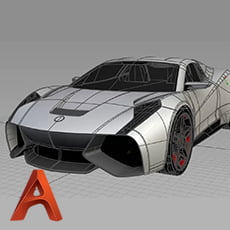
Autodesk Alias Product Des
Autodesk Alias Product Design Fundamentals
The course consists of a series of video tutorials. Each is accompanied by a WIRE file containing the object being modeled and a PDF file, which provides additional...
Duration - 35 Hours 4900

AUTOMOTIVE SKETCHING ADVAN
AUTOMOTIVE SKETCHING ADVANCE
This short course introduces to Car & Motorcycle sketching. Its starts from the very basics of sketching to more advanced levels while giving you engaging assignments. Be it a student or professio...
Duration - 25 Hours 4499

DIPLOMA IN AUTOMOTIVE DESI
DIPLOMA IN AUTOMOTIVE DESIGN
The Diploma in Automotive Design course by Creactive is aimed at providing a complete demonstration and insight into the various factors and steps that go into styling a Vehicle. It covers theoretical aspects that help in understa...
Duration - 70 Hours 49900

AUTODESK ALIAS TUTORIAL AD
AUTODESK ALIAS TUTORIAL ADVANCE
Autodesk Aias Workbench Free tutorials by Kerry Kingston. Learn the basic software and tools to get started with Alias Software, create Class A surfaces, Build project, etc. Today...
Duration - 20 Hours 24500

TUTORIAL- ALIAS AUTOMOTIVE
TUTORIAL- ALIAS AUTOMOTIVE INTERMEDIATE
6 days crash course for free. This Alias Class A training was created by Barry Kimball, an expert Alias Automotive and ICEM Surf Class A modeler. ...
Duration - 10 Hours 9900

MOTORCYCLE DESIGN
MOTORCYCLE DESIGN
A design course crafted by industry experienced tutors for all the passionate motorcycle lovers out there. It takes you through a complete journey of learning the prominent factors that govern the Automotive Design discipline. ...
Duration - 45 Hours 24999
